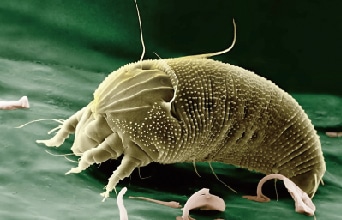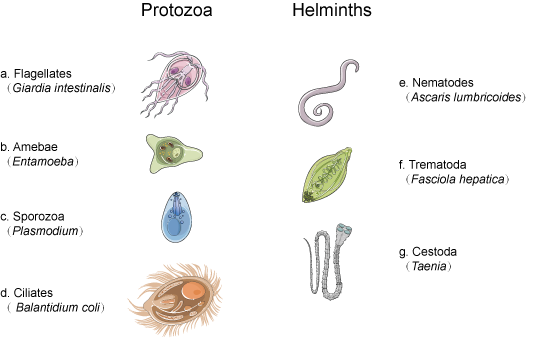Parasitic Antigens
Parasites Background
 Related Resources
Related Resources
Infection Immunity
Infectious Disease ELISA kit
General Information on Parasites
A parasite is defined as an organism that lives in a more or less close association with another organism of a different species (the host), derives sustenance from it and is pathogenic to the host, although this potential is not always expressed. In medicine the term is used in a narrower sense and designates eukaryotic pathogens, which belong to the protozoa and metazoa, including helminths, arthropods, and some other groups of lower medical significance. Parasites cause numerous diseases in humans, some being of extraordinary significance.
The parasites are categorized into two major groups: parasitic protozoa and parasitic helminths (Figure 1).
 Figure 1. Parasites Category.
Figure 1. Parasites Category.
Protozoa are unicellular eukaryotes that form an entire kingdom. The parasitic protozoa can be divided into four traditional groups based on their means of locomotion and mode of reproduction: flagellates, amebae, sporozoa, and ciliates.
- Flagellates have one or more whiplike flagella and, in some cases, an undulating membrane (eg. trypanosomes). These include intestinal and genitourinary flagellates (Giardia and Trichomonas, respectively) and blood and tissue flagellates (Trypanosoma and Leishmania).
- Amebae are typically ameboid and use pseudopodia or protoplasmic flow to move. They are represented in humans by species of Entamoeba, Naegleria, and Acanthamoeba.
- Sporozoa undergo a complex life cycle with alternating sexual and asexual reproductive phases. The human parasites Cryptosporidium, Cyclospora, and Toxoplasma and the malarial parasites (Plasmodium species) are all intracellular parasites.
- Ciliates are complex protozoa bearing cilia distributed in rows or patches, with two kinds of nuclei in each individual. Balantidium coli, a giant intestinal ciliate of humans and pigs, is the only human parasite representative of this group.
Parasitic helminths, or worms of humans, belong to two phyla: Nematoda (roundworms) and Platyhelminthes (flatworms).
- Nematodes are among the most speciose and diverse animals. They are elongated and tapered at both ends, round in cross section, and unsegmented. They have only a set of longitudinal muscles, which allows them to move in a whiplike, penetrating fashion; a complete digestive system that is well adapted for ingestion of the host's gut contents, cells, blood, or cellular breakdown products; and a highly developed separate-sexed reproductive system. They shed their tough cuticles (molt) as they undergo development from larvae to adults, and the eggs and larval stages are well suited for survival in the external environment. Most human infections are acquired by ingestion of the egg or larval stage, but nematode infections can also be acquired from insect vectors and skin penetration.
- Platyhelminthes are flatworms that are dorsoventrally flattened in cross section and are hermaphroditic, with a few exceptions. All medically important species belong to two classes: Trematoda (flukes) and Cestoda (tapeworms). Trematodes are typically flattened and leaf shaped with two muscular suckers. They have a bifurcated gut and possess both circular and longitudinal muscles; they lack the cuticle characteristic of nematodes and instead have a syncytial epithelium. Trematodes are hermaphroditic, with the exception of the schistosomes (blood flukes), which have male and female worms that exist coupled together within small blood vessels of their hosts. Cestodes, or tapeworms, are flat and have a ribbon-like chain of segments (proglottids) containing male and female reproductive structures. Adult tapeworms can reach lengths of 10 m and have hundreds of segments, with each segment releasing thousands of eggs. At the anterior end of an adult tapeworm is the scolex, which is often elaborated with muscular suckers, hooks, or structures that aid in its ability to attach to the intestinal wall. Adult tapeworms have no mouth or gut and absorb their nutrients directly from their host through their integument.
Hot Products